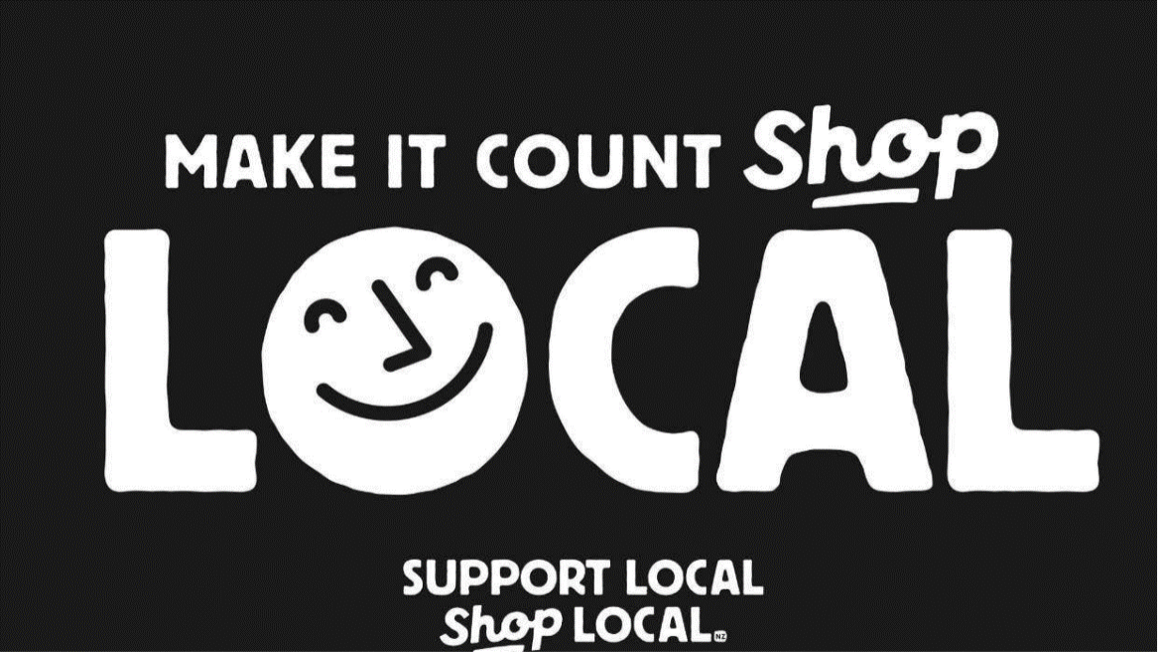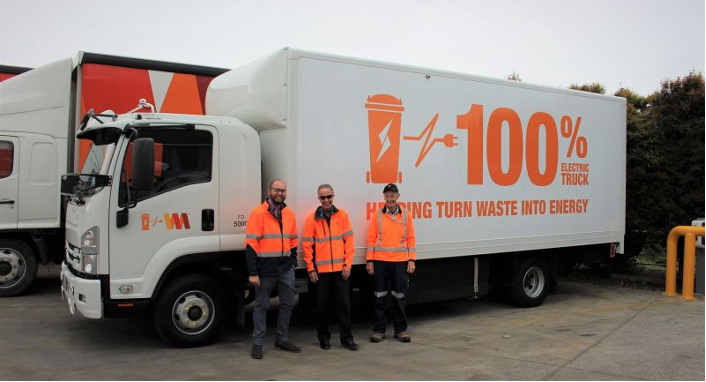Marketing is typically viewed as being the advertisements (ads) you see or the salesperson you deal with. But beyond the ads and salespeople, are layers of thoughts, planning, and processes.
Kotler and Armstrong (2021) define marketing as a "social and managerial process by which individuals and groups obtain what they need and want through creating and exchanging products and value with others."
Marketing aims to know and understand the customer so well that the product or service fits [the customer] and sells itself. Ideally, marketing should result in a customer who is ready to buy. Then, all that should be needed is to make the product or service available
Understanding needs, wants, and demands
What does a consumer need? Want? Demand? The concepts of needs, wants, and demands are linked and understanding them will help you design effective marketing strategies.
A creative marketer needs to understand:
- What the basic needs of consumers are
- How or what kind of product satisfies customer needs
- How to make sure such products reach potential customers
- How to keep customers satisfied and loyal to their products. (Breschi 2021.)
In marketing, the concepts "needs," "wants," and "demands" are all important. Despite how similar they may appear; these terminologies have more differences than you might expect.
- A need: A basic human requirements like shelter, clothes, food, water, etc. which are essential for human beings to survive.
- A want: A product desired by a customer that is not required to survive. (Understanding Needs, Wants and Demands in Marketing world, 2021.) We might both be thirsty and need something to drink, but you want a can of Coke while it is tea for me.
- Demands: Are wants empowered by the capacity to buy. Everyone will have a desire to buy something but perhaps might not have the means to do so.
Maslow’s Hierarchy of Needs
A good starting point to explore human needs is Maslow's Hierarchy of Needs.
- Self-actualisation: Education, skills development, caring for others, morality, creativity, spontaneity, acceptance, experience, purpose, meaning and inner potential
- Esteem: Self-respect, confidence, achievement, respect from others, need to be a unique individual
- Love and belonging: Friendship, family, intimacy, sense of connection
- Safety: Protection from violence and theft, emotional stability and wellbeing, health, financial
- Physiological needs: breathing, food, water, shelter, clothing, sleep
Maslow’s Hierarchy of Needs is a way of illustrating the most fundamental needs that drive human behaviour. We are motivated by a desire to meet these needs from the bottom to the top of the pyramid. If we do not have a place to sleep, food to eat, water to drink, we will not be driven by self-actualisation or self-esteem needs because first, we must take care of our physiological needs.
Take a moment to reflect on the Hierarchy of Needs. What needs to motivate you?
An imbalance between actual and desired
Needs are triggered when there is an imbalance between actual and desired states. The consumer has a problem that needs a solution or already has a solution but is not fully satisfied. But do consumers always know what they need or want?
The following video discusses the importance of identifying the needs of consumers with research and specific questioning, based on their wants and needs, to ensure they are satisfied.

Success is subjective. A well-developed marketing plan is necessary to help you reach your business objectives.
A solid marketing plan is unquestionably the key to having a successful marketing business. An effective marketing plan will help:
- Analyse research that has been gathered
- Understand the target audience
- Outline your marketing objectives, and
- Create a brand that customers return to time after time.
The marketing plan process requires the marketer to maximise the potential for the business by effectively using marketing resources such as social media. Marketing trends are constantly changing, so it is important to have a marketing plan to reach the target audience.
Here are seven steps to creating a marketing plan.
Do research
Market research is used to create a realistic image of your business, your product or service, and how consumers perceive you. During research you may develop growth forecasts, uncover competitive characteristics, and explore prospects. The investigation may identify some business challenges and solutions that can immediately be put into action.
Write a brand summary
A brand summary, also known as a brand definition, condenses all the thoughts about the company's goal, values, promise, and character into a single phrase that explains what the business does, how it differs from other competitor products, and what the business promises.
Define your target audience
The target audience can be determined with the help of a market research analysis. This is the same group of consumers you would like to direct marketing efforts to. Consumers of a certain age, gender, area or language/ethnicity could be among your target audience. Remember that any target audience should include the consumers you wish to attract and those who can influence and offer exposure to that demographic.
Add a situational analysis
What is going on in the world around your business should be factored into your strategic marketing plans. When drafting your plan, keep trends, existing challenges, competitors, and the competitive environment in mind. A SWOT analysis will help you strengthen this area of your project.
Outline marketing objectives
Marketing objectives or goals will drive your marketing plan. These achievable targets are set once problems and opportunities have been identified. They represent the pinnacle of your strategic thinking, and each strategy may contain multiples. A well-thought-through marketing strategy will have measurable goals.
Create a marketing strategy
Define targeted marketing strategies that meet the objectives, reach the target demographic, and expand your client base. Remember to concentrate your efforts on the areas of your business that can be used to establish a distinct value in consumers’ minds.
List the tactics and implementation
It is now time to put your strategy into action:
- Determine how to implement the strategy.
- Connect with consumers using digital platforms – Inform and persuade them about the product or service.
- Get the resources to promote the product.
Check out some successful marketing strategies of well-known brands. What did they do to successfully deliver their marketing campaign?

Airbnb
Airbnb has changed the way we travel and look for accommodation. The platform's marketing strategy is targeted at attracting both travellers and hosts. Its digital marketing focuses on user-generated photographs and videos (highlighting the cities and properties in its platform) on Facebook, Instagram, and Twitter, as well as how-to videos and posts for owners and popular city guides.

Spotify
There are many streaming music services out there, but Spotify stands out because it focuses on helping consumers discover new music.
Spotify deviates from traditional music streaming platforms by providing a unique user experience. It allows users to choose music depending on their mood and the standard genre filter. Whether you want to work out, sleep, or even sing in the shower, they have got you covered! This allows users to discover songs that would otherwise go unnoticed, reinforcing their affinity with the company.

Nike
There are very few brands as recognisable as Nike and its “Just do it” slogan. From the beginning, this brand has focused its marketing on promoting brand values such as overcoming adversity or innovation.
Nike relies heavily on storytelling with ads that tell inspiring stories and provoke positive emotions in users to convey this culture to its audience. Brand values are not only present in your marketing, but in everything you do.
These examples demonstrate how a marketer might generate demand for a product or service by identifying a relevant theme or point-of-difference. When creating digital marketing campaigns, start collecting data already out there and putting a spin on it that will benefit the business. Digital marketing is a terrific method to communicate with consumers creatively and teach them about the business. Create interest in the product, and the money will follow.
Marketing plans range from simple and basic to extensive and complicated. Remember, as with everything else, it all comes down to what works best for the business. One of the key components of a marketing plan is a situational analysis such as a SWOT and/or PESTLE analysis. It is a great way to see how you compare with the competition.
A lot goes into designing the ideal marketing strategy for a business. Situational analysis models are essential tools and approaches for a better understanding of the context a business operates within. Some of the most frequently used models are the SWOT and PESTLE analyses.
A SWOT analysis is a tool for taking a realistic, fact-based, data-driven look at an organisation’s strengths, weaknesses, opportunities, and threats. It looks at internal and external factors affecting a business. A PESTLE analysis focuses on external factors which may affect a business.
Comparing SWOT and PESTLE
SWOT and PESTLE analyses complement one another like two sides of a coin. They are especially helpful when evaluating a new project systematically and completely. Both SWOT and PESTLE frameworks assist businesses in making informed decisions about their options, identifying opportunities, managing innovation, and identifying areas where they can gain a competitive edge.
SWOT analysis
A SWOT analysis is a basic yet effective method for developing your business strategy – Whether the business is a fresh startup or a well-established brand.
SWOT stands for strengths, weaknesses, opportunities, and threats. Internally, consider what the company’s strengths and weaknesses are. These are things you have control over and can make changes. Who is on your staff? What intellectual property, unique products, and services do you have? Where are you located?
- How can you build and enhance your strengths?
- How can you resolve and reduce your weaknesses?
Externally consider threats and opportunities. You can seize opportunities and shield yourself from threats, but you cannot change them. Consider competitors, raw material pricing, and consumer trends.
- How can you exploit and expand opportunities?
- How can you avoid and thwart threats?
PESTLE analysis
A PESTLE analysis is a framework marketers use to analyse macro-environmental (external marketing environment) factors that affect a business. You can use the results of a PESTLE analysis to help with a SWOT analysis – particularly the external opportunities and threats aspects of a SWOT analysis.
PESTLE stands for political, economic, social, technological, legal, and environmental.
| Political | These determine the impact of government and policies on an organisation or industry, including economic, fiscal, and tax policies as well as political policy and stability. |
| Economical | Examine the current and prospective market conditions. If the economy is healthy, people will be more eager to spend money on products and services. |
| Social | The areas that involve the population’s shared beliefs and attitudes are known as socio-cultural aspects. Population increase, age distribution, health consciousness, and career preferences are examples. These variables directly impact how marketers perceive consumers and what motivates them. |
| Technological | The technical landscape evolves rapidly, impacting how we promote our products and services. Consider new methods of producing and developing goods and services, new ways of distribution, and new ways to reach target markets. |
| Legal | Legal considerations include health and safety, equal opportunity, advertising standards, consumer rights and regulations, product labelling, and product safety. To be successful, businesses must understand what is and is not lawful. |
| Environmental | Environmental factors are becoming more essential because of the scarcity of raw materials, pollution targets, carbon emission targets, and doing business in an ethical and sustainable manner. Consumers are increasingly expecting that the things they are buying are sourced ethically and sustainably. |
Businesses can use a combination of the SWOT and PESTLE analysis to get a holistic perspective of internal and external contexts, threats, and opportunities. Each can be used to supplement the other, resulting in a much more extensive understanding of the business environment.
A marketing trend is defined as anything that affects your company's market. This might be something as wide as artificial intelligence, as irregular as consumer preferences, or as specific as new industry regulations. It is almost certain that the business is being affected by several market trends at the same time.
Current marketing trends:
- Building content communities
- Artificial intelligence
- Augmented reality
- Search engine optimisation
- #shoplocal
- Sustainability
- Customer segmentation
- Influencer marketing.

Building content communities
Building communities has been a drive for marketing teams, both due to the emergence of Slack communities (digital congregations very similar to Facebook groups) throughout IT and the focus on personalisation in marketing. By creating communities focused on content sharing and creation, marketing teams will continue to increase their reach despite having fewer resources. Expanding your reach is beneficial for brand awareness—and, of course, metrics—but it is also beneficial for building a sense of community within the target audience.
Artificial Intelligence (AI)
AI technology facilitates decision-making by speeding up data processing and analysis. Customers anticipate prompt responses from businesses. As a result, AI-powered chatbots play a role in marketing.
As AI technology advances, additional tools for analysing data and creating marketing materials such as customised blog articles will become available. Marketers and other team members can focus on critical and complex tasks where they can add real value and have automation take care of the monotonous, simple tasks.
Augmented Reality (AR)
Augmented Reality is an interactive experience of a real-world environment in which computer-generated perceptual information is used to augment the items in the real world.
Check out how ARA Journeys use AR to re(connect) people with Mātauranga and te reo Māori.
‘Augmented Reality Applications (ARA) uses immersive technologies to capture imaginations through experiences that blend digital magic with the beauty of te taiao (natural world) and te ao Māori (Māori worldview). The company is passionate about Māori culture and using augmented (AR) and mixed (MR) technologies as a tool for encouraging cultural (re)connection with traditional knowledge (Mātauranga) and the normalisation of te reo Māori through gamified enviro-cultural experiences.
ARA’s overarching mission is to build a global indigenous cultural technology hub that (re)connects people to cultural stories of the land, preserves & shares indigenous cultural knowledge, and normalises the use of indigenous languages. Starting within New Zealand Iwi, ARA helps indigenous people grow opportunities in tourism, education, and enterprise.’ (Kenobi, Warbrick and Taylor, 2021)

Search engine optimisation
For marketing and search engine optimisation (SEO), consistency is essential. Content that is distinctive, creative, and original ranks higher than repetitious content and of low value.
Page one of search results enjoys 95% of search traffic. If your material does not appear high in the search results, chances are potential customers are not seeing it. Search engines use bots to crawl web pages, collecting information and collating pages into an index. Algorithms analyse pages in the index and determine the order a page appears in a search result.
You can help your website rank well (and appropriately) by:
- Considering the words, you use in written copy.
- Writing meaningful titles in the code.
- Making links meaningful – Not “click here”.
- Building relationships with other sites and producing fresh content that gets linked.
#Shoplocal

‘New Zealand is proud of New Zealanders, and this is certainly the case in the business community, with a strong and engaged #ShopLocal movement. It is important to feel local and be active within the community to cater to that demand. Promote yourself within your neighbourhood; invest in campaigns that fuel the shop local movement or partner with non-competing businesses (like a coffee shop or bar) to expand your reach. Be proud of your roots, motivations and story. After all, if shoppers feel like they know your brand personally, their affinity to it will strengthen.’ (Redzovski, 2021).

Sustainability
The "tree-huggers" are no longer the only ones concerned about the environment. 71% of consumers in New Zealand were willing to pay more for sustainable and ethically manufactured goods, according to a survey of over 13,000 people across the country.
In 2017, under the Certified Emissions Measurement and Reduction Scheme (CEMARS®), Waste Management New Zealand implemented a sustainability strategy to manage and decrease greenhouse gas emissions. This is an important contribution to collecting and managing waste nationwide. Over the last three years, it has added electric cars to its fleet, and it is currently converting its diesel trucks to electric in a purpose-built facility in New Zealand. The Redvale Landfill & Energy Park converts landfill gas to electricity and is Auckland's largest renewable energy generator.

Customer segmentation
The practice of segmenting your target market into accessible groups is known as customer segmentation. Customer segmentation divides a market into subgroups based on the following:
- Demographics
- Requirements
- Priorities
- Shared interests
- Behavioural characteristics.
Customer segmentation can help marketers understand the target audience better.
In 2017 Air New Zealand ran a Facebook ad for a quiz and prize draw. They used the data collected from the quiz to gain insights into the target audience by using customer segmentation into the behaviour of their customers. They produced a campaign with a series of Golden Questions and a prize draw. Willing consumers filled out the questionnaire and received a score, which was used to populate their preferences in the Air NZ database.

Influencer marketing
#ad #gifted #affiliated #sponsored "paid partnership with..." The influencer economy has exploded with predictions that it will be a $15 billion industry by the end of 2022. Growth is in large part due to Tik Tok’s rapid expansion. Influencers have proven that their followers will follow them across platforms, increasing reach for brands that they partner with.
Influencer marketing is certainly a trend that continues to grow, with almost half of marketers spending more than 20% of their budget on influencer content. To keep up with this trend, creative marketers should:
- Budget for influencer marketing campaigns
- Prioritise video content with your creators
- Be active on multiple platforms.
Brief
You are hired as the new creative marketer for Sandy’s Shoe Box, a trendy, new shoe store that just opened in Auckland.

You are asked to do research on the shoe store industry, utilising SWOT analysis and PESTLE analysis techniques.
Task
Prepare a brief summary of your SWOT and PESTLE findings with regards to the shoe store markets that can be used by the company.
Share your analysis with your peers on the forum.

